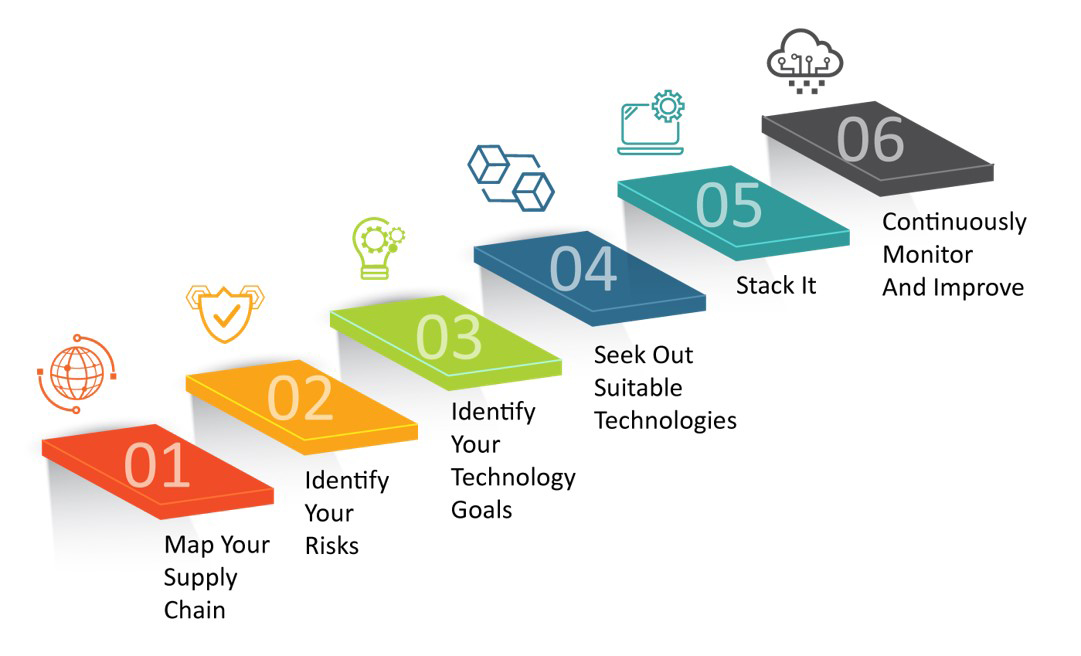Supply Chain Technologies Literature Review
Literature Review Assignment Help
Introduction
The importance of an effective supply chain function within the conventional business organization in the contemporary corporate landscape cannot be ignored. With the advent of technology, the supply chain function itself has evolved so much so that its effectiveness has improved drastically (Saikouk & Spalanzani 2016). However, the advent of technology has also resulted in certain issues relating to the supply chain technology. This report conducts a critical research literature review on some of these issues. Along with that, the report also presents technology applications and their influence on business operations. Another important highlight of the report is that of the flow of information amongst the chain partners which use supply chain technologies.
Transform your supply chain with Assignmentstudio. Our strategic expertise and cutting-edge solutions empower businesses to achieve operational excellence, mitigate risks, and capitalize on opportunities in the dynamic landscape of Supply Chain Management.
Literature Review
Key Issues Relating to Supply Chain Technology
The underlying issues relating to the supply chain technologies which are currently being used in the world incur an increased cost throughout the supply chain all thanks to the utilization of supply chain technologies. The second most important issue is that of an increased pressure in the supply chain due to the risk of technology failure (Power 2014). Another important issue which relates to supply chain technology is that of the requirement of fast prototyping in some industries so as to capture the market and the attention of the customers.

Technology Applications and Their Impact on Business Operations
Technology is an important instrument for enhancing the competitiveness of the supply chain of a business. At the same time, it enhances the performance of the supply chain by making the supply chain and logistics system more effective and efficient. All of this has an impact on the operations of the business; if the supply chain management is effective and efficient, there exists only a very small likelihood of any sort of delays in the operational processes of the organization (Pigni, Ravarini & Saglietto 2010). As a matter of fact, selecting the right supply chain technology for different logistics and supply chain activities including the sub activities and the sub processes of the business is of a profound importance for any business organization (Gligor 2016). The impact of supply chain technologies on business operations and their application is so massive that it directly influences the situation of strategic competitive advantage of the organization.
Flow of Information Among the Chain Partners Using Technologies
The use of the most sophisticated technologies and the internet in supply chain process is increasing at a fast pace. The fundamental element of success in this regard is an accurate, fast and reliable source of information. This information, in the context of the supply chain, includes the level of inventory, the forecasting and sales data, order status and tracking, delivery schedule, procurement and performance metrics (Hove-Sibanda & Pooe 2018). An integration of all of the information characterizing a supply chain management system and the flow of information helps the business realize benefits of efficiency. The ability of the business organisation to respond to market fluctuations and volatility is enhanced, thereby adjusting the position of the business to manipulate the production, inventory and logistics levels correspondingly in a resource optimistic fashion, keeping in view the dynamics of the contemporary corporate landscape. All of this comes from a smooth flow of information amongst the various supply chain partners using the contemporary supply chain technologies for business purposes.
Discussion
Some of the most notable supply chain technologies which are currently in use in the world include artificial material handling system, artificial intelligence, barcoding, and 3D printing. However, broadly speaking, these technologies can fundamentally be classified into three categories: information, communication and automatic identification technologies (Liu, Prajogo & Oke 2016).
An example of AITS in the domain of supply chain is bar-coding. According to Al-Odeh (2016), the role of bar-coding in modern supply chains is instrumental; bar-coding provides ease in the process of identification of items of inventory during the sub-processes of storage and retrieval. At the same time, it is helps identify the inventory items at the time of inspection and dispatch. This idea has been supported in the work of Flynn, Koufteros & Lu (2016) according to whom, using barcodes helps reduce paperwork and the time required for processing. Similarly, human error is also reduced drastically. Saldanha et al. (2015) argue that the utilization of barcoding has altered the way supply chain partners interact and integrate with each other. For example, Procter & Gamble had an obsolete shipment tracking system which it used to track the shipments from factory to the retail outlets. However, currently P&G uses barcodes to track not only shipments but also individual products within the supply chain of the company. This is only one example of the role of modern technology in the contemporary supply chains.
Another important example of communication technology in the modern supply chains is that which is seen in the case of courier services and logistics companies such as FedEx and DHL, whereas the example of the information technology in the supply chain Dell may be considered as one of the most exemplary roles played by the sophisticated information technology in the area of modern supply chains.
The bringing together of the important technologies and the simultaneous integration of the supply chain processes with these technologies across the organisation has ultimately led the various supply chain partners synchronize their activities. This ultimately has resulted in a greater efficiency and a massive reduction in the number of time delays. The minimization of the risk factors such as those pertaining to human errors has also so been a great payoff of the modern technologies (“Definitive guide to integrated supply chain management: optimize the interaction between supply chain processes, tools, and technologies” 2014).



